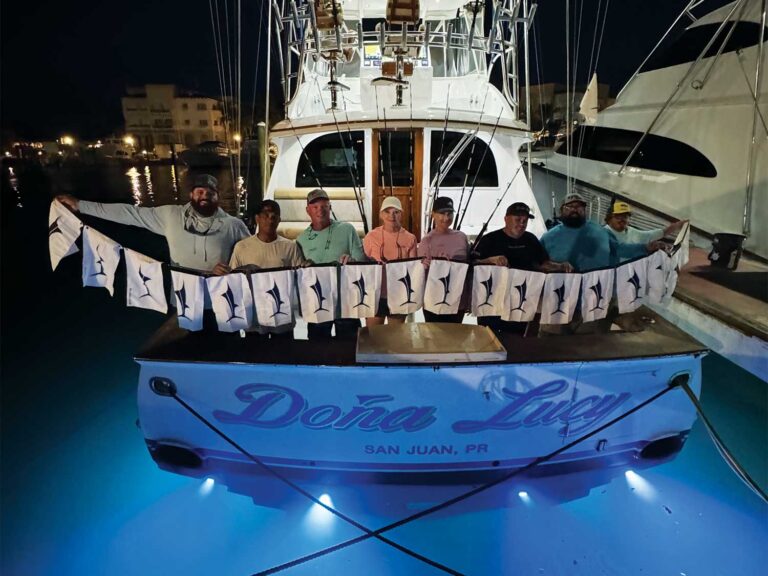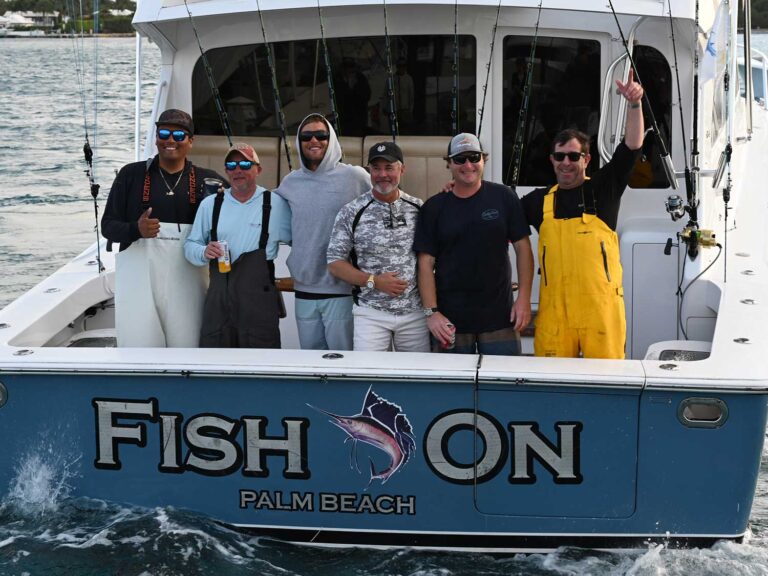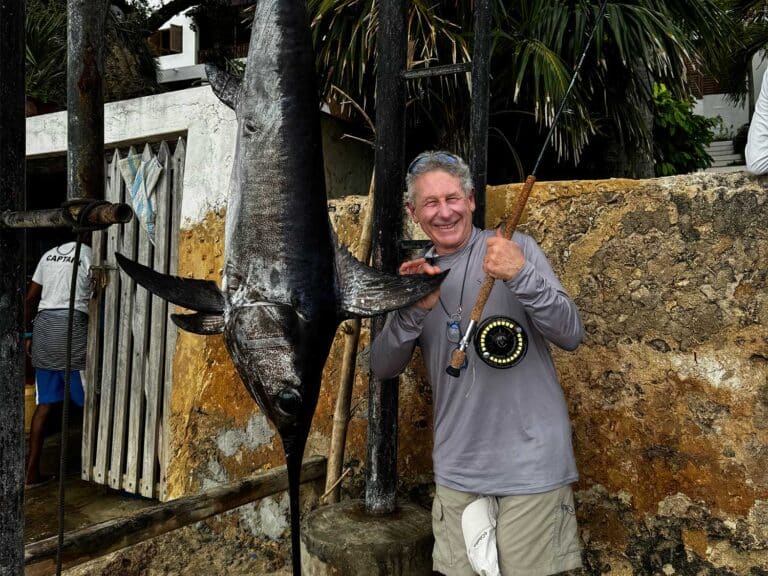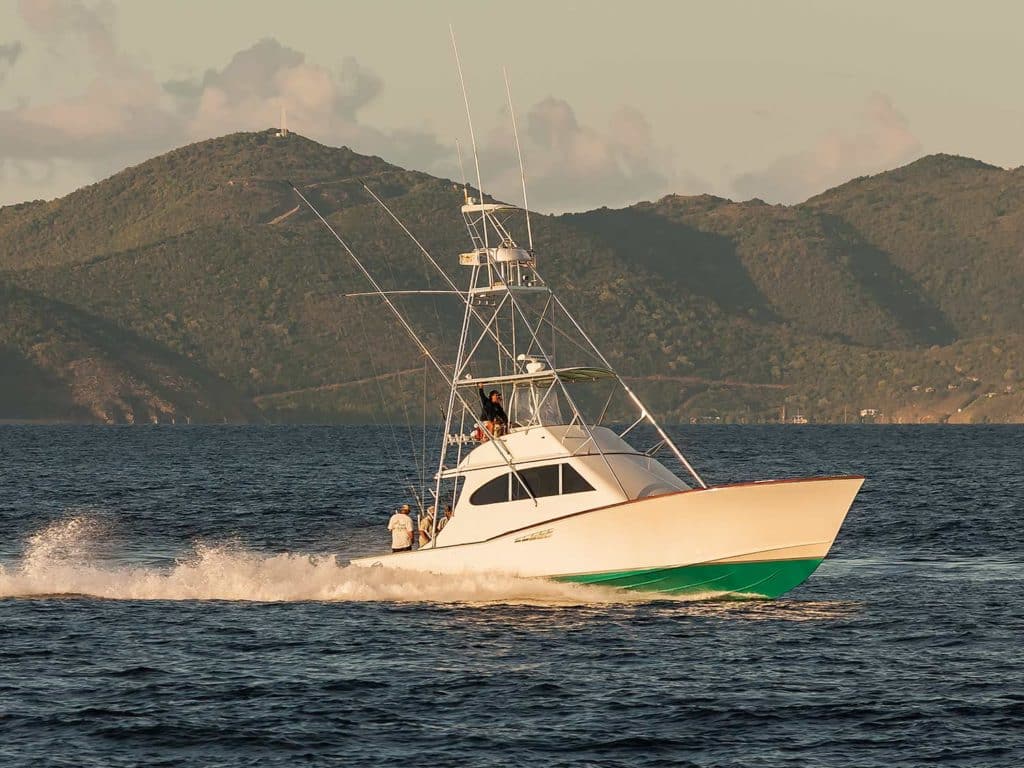
Winter amid the snowy peaks of Aspen, Colorado, is diametrically opposed to sunny Florida, but for Miami native Rob Ruwitch, it’s all about the adventure, no matter the form. As the owner of the globe-trotting 46-foot Kincheloe-Nickerson known as Sharky’s Revenge, he knows a few things about the world, having taken the boat hundreds of thousands of miles to some of sport fishing’s best destinations, and always on its own bottom.
I spoke with Ruwitch one early morning in late January while he was waiting for his favorite ski lodge to open and grumbling about the single-digit temps awaiting him on the other side of his truck window. What followed over the next hour was a freewheeling near-stream-of-consciousness discussion about boats, marlin fishing, Venezuela, Alaska and more boats, which resulted in 12 pages of single-spaced notes and a look inside one of the sport’s most interesting programs.
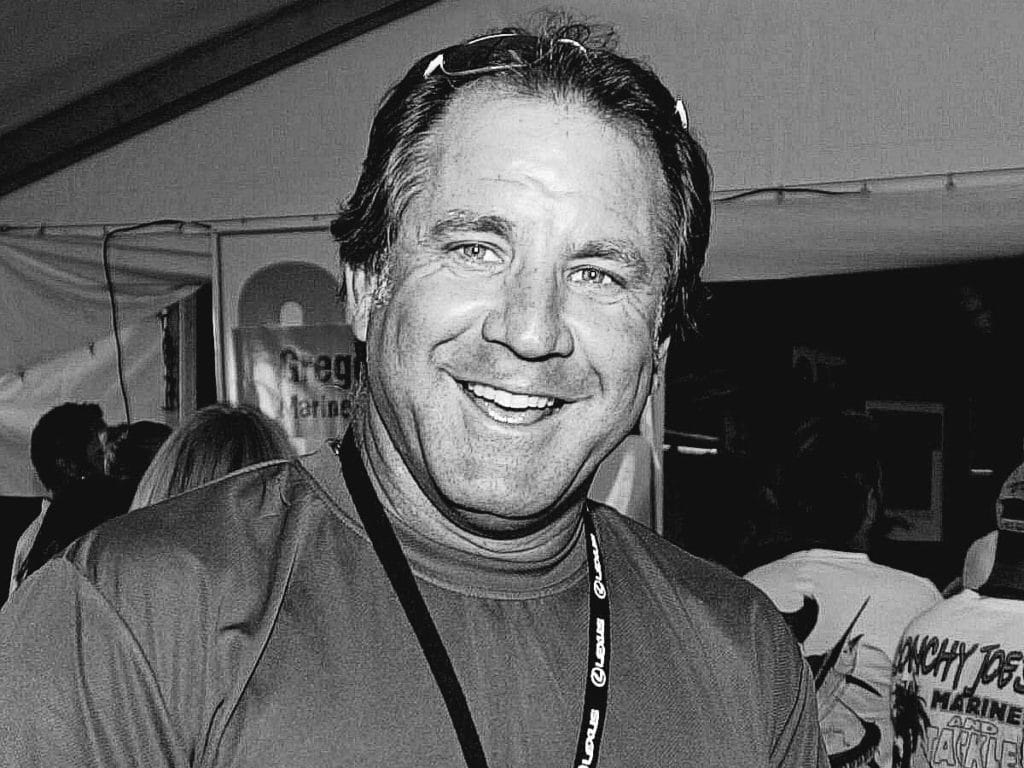
Off and Running
Like most owners, Ruwitch found himself moving up through a few boats in the mid-1980s before finding a rig he could really sink his teeth into. A string of center-consoles, including a Formula, a Paramount and one of the first 25-foot Contenders, eventually led to a 38-foot Luhrs. “My roommate at the University of Florida at the time and I had an ongoing bet: We both wanted to be the first to catch a blue marlin,” Ruwitch says. “He was traveling to the Caymans a lot, and eventually he caught his fish first, but I finally did it on the Luhrs in Chub Cay with a buddy, and that was it—I was hooked. If it had a bill and jumped a lot, I wanted to catch it, and marlin fishing became a lifelong passion of mine from that day on. When we started traveling to places like St. Thomas and Venezuela and the guys wanted to tuna fish for a while, I’d literally sit on the engine box and pout until it was time to marlin fish again.” And with more than 3,000 blues to his credit, that passion shows no sign of waning.
Watch: Take an immersive look at Quepos and the Offshore World Championship.
A chance encounter at the Miami International Boat Show in 1997 caught his eye. “At the time, the boat was called Bullet—the broker said she was the fastest 46-footer on the water—a legit 40-knot boat, and this was 25 years ago,” he says. A little research led to an interesting story behind the build: Gordon Kincheloe and John Nickerson had teamed up to build fast, well-outfitted South Florida-style dayboats, eventually completing two 44-footers and a 61-footer. They built the hull and house for a 46, but the industry-crushing luxury tax of the day took its toll on the company before it could be completed, and the business venture went under. A builder named Charlie Brown finished the boat for Nickerson as his personal vessel in 1993; it went up for sale a few years later at the Miami show. “I had taken the Luhrs to Mexico a few times with my dad, and so I was looking for something a little bigger, and faster,” Ruwitch says. Bullet was renamed in honor of his pet golden retriever, Sharky. “The dog wasn’t very well-behaved; in fact, it ate everything in the house, so it just seemed fitting that the boat would be Sharky’s Revenge,” he says.
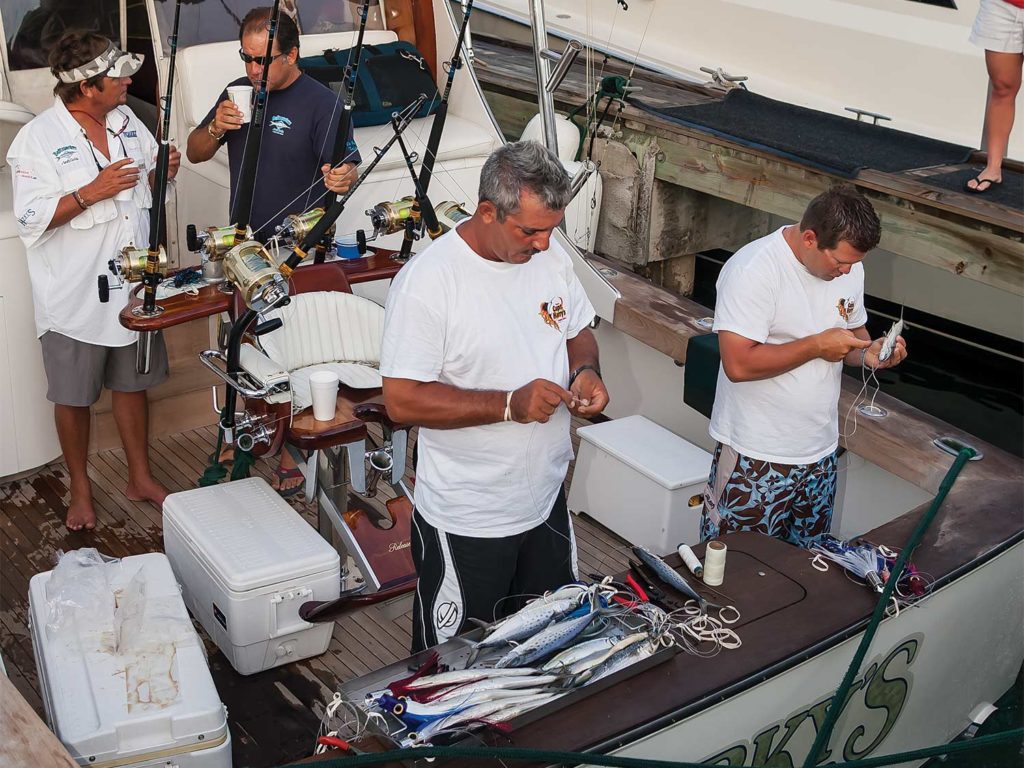
The Adventure Begins
As soon as the boat was ready to travel, Ruwitch wasted no time in hitting the proverbial road. “The first trip was up the East Coast to North Carolina. Keep in mind,” he says, “I’m a South Florida guy, so this was an all-new experience for me—getting up at 3:30 in the morning, running out of Hell’s Gate in Oregon Inlet to go fishing, and then running home in the middle of the afternoon to make it back by dark, and then getting everything cleaned up and ready for the next day. When we got home to Florida, I needed a vacation from my vacation, but we had fun. I also caught the largest blue marlin of my life on that trip—we called it an easy 800, and fought it for six and a half hours on 20-pound-test. We backed up 21 miles on that fish and had it on the leader at least two dozen times. We were going to kill that one; in fact, Chip Shafer floated us a flying gaff, but eventually we popped the leader. I still vividly remember that one though.”
Next stop: Mexico. With Capt. Scotty Alvarez at the helm, Sharky’s Revenge made several trips south to Cozumel during that destination’s heyday in the late 1990s, using plastic 55-gallon drums to haul additional fuel on deck for the passage from Key West. After returning to the US, Ruwitch faced a personal crisis when his father, Lee, passed away in April 1999. A successful businessman and entrepreneur, Lee had a significant influence on Rob’s professional career as a respected adviser and mentor, as well as a loving and devoted father. “I had just spent two months in the hospital with my dad, so Scotty and I had taken the boat to the Bahamas and then down to Provo, towing my 17-foot Mako flats boat that I had at the time. He wanted to keep going to St. Thomas, but I had to fly home to manage my dad’s estate, so I got on an airplane and left. When I landed, I thought about it and called Scotty back. I said, ‘If you can find someone to tow the flats skiff back to Miami, then you can go to St. Thomas.’ And that’s what we did.”
After a good season fishing the North Drop, they kept heading south to Venezuela and its storied fishery of the La Guaira Bank. “I had always wanted to go through the [Panama] Canal and then fish the Bisbee’s, so we just kept going,” Ruwitch says. Three days later, Sharky’s Revenge pulled into Herradura Bay—the eventual location of Los Sueños Resort and Marina—which at the time had just a single small dock for the workers. “We asked if we could tie up the boat for a couple of hours and went into Jaco for tacos on the beach, then kept going up the coast to Flamingo,” he says. In Nueva Vallarta, Mexico, a chance encounter with Kerri Burrus and Capt. Norm Isaacs led to another plot twist. “Norm had been filming his show, Big Game Fishing the World, on ESPN for a while and had this idea for a made-for-television tournament series, where people would travel around and fish some great destinations such as St. Thomas, the Dominican Republic and Mexico, with camera crews and judges on each boat. Kerri said, ‘I’ll do it if you do,’ and that was the start of the [Billfish Xtreme Release League].”
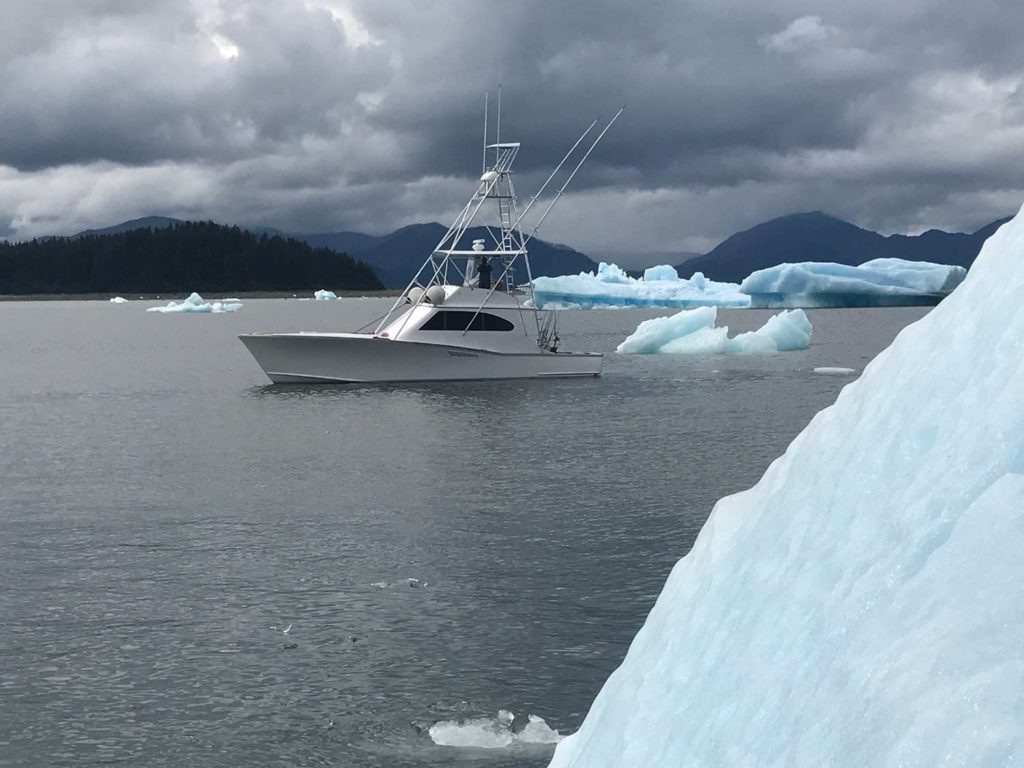
Scoring a Fantasy Slam
After spending a few seasons fishing out of Caraballeda, Ruwitch knew that the Venezuelan fishery was a special one. And as with any kind of adventure destination, just when you think you’ve seen it all, the unexpected happens. “We were there for a couple of weeks in mid-December 2004,” he says. Capt. Bubba Carter had been at the helm for a few seasons, and fishing was good. “We were a white marlin short of a triple grand slam on December 13, so we went out the next day and just said, ‘Let’s give it a shot.’” First bite: the white marlin they needed from the day before. A short while later, their second fish looked to be another white marlin; just as they were getting ready to release it, the Venezuelan mate yelled, “Spearfish!” so they took a closer look and a few photos. It was Ruwitch’s first. Put the baits back out; bite No. 3 was a sailfish. “Now we’re thinking at least a super slam, so we trolled into some deeper water off the power plant and got a bite,” Ruwitch says. “The fish stayed deep, didn’t jump. We were thinking it was a blue marlin, and sure enough, we had a super slam, and it wasn’t even noon yet.”
Carter got on the VHF and called Capt. Desi Zenar, skipper of Big Y (who has since passed away), who happened to be way offshore of the bank tuna fishing. “We ran to him, and he loaned us a pair of 80s, some swordfish baits and some rocks from the beach, and we were all set,” he says. They ran back to the bank and got set up to drop for a swordfish. “The locals use a paper bag full of rocks as a weight,” Ruwitch explains. “The bag comes apart when it hits the bottom, and the bait drifts along. Bubba said that we had enough to make one drop, but I told him, ‘We have a toolbox full of tools. We’ll start pulling parts off the engines if we have to, but we’re staying until we catch one.’ It didn’t take long, and then the mate was yelling at me to reel.”
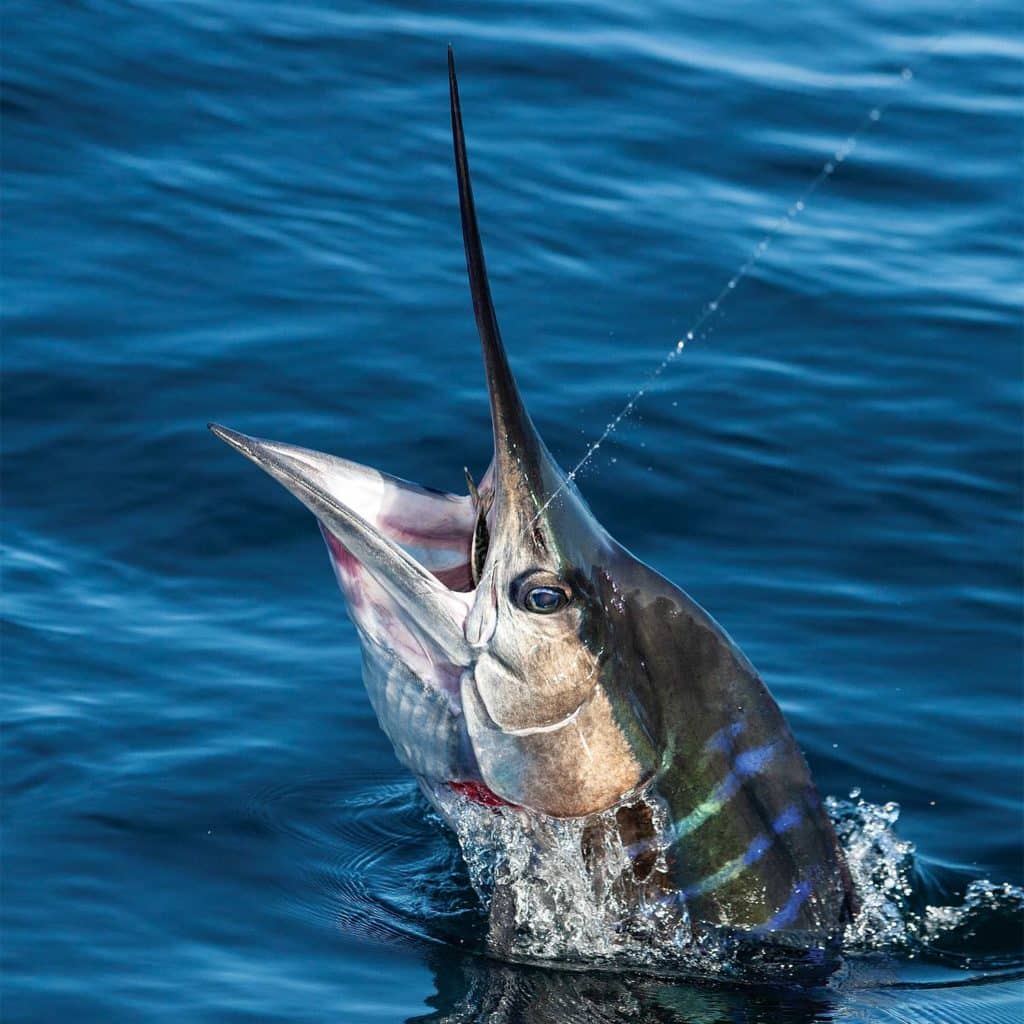
With nearly all the line off the spool and no braid backing, it was a long crank, but eventually there was a little resistance and a tiny bit of a bend in the rod tip. “I was winding and winding, then we got the light up, and I stood up in the chair and looked over the side—all I saw was this big eyeball. It probably weighed about 25 pounds, but we had caught our swordfish. We caught only five fish that day, but those five just happened to be all of the Atlantic billfish species, and it was only about 2 p.m. when we started heading back to the marina.” That led to a worldwide chase to catch an IGFA Billfish Royal Slam in the shortest amount of time, which ended at 33 days. Eventually his mark was beaten, but it remains one of the most amazing feats in billfishing history.
Read Next: Learn to make full use of a stand-up harness here.
North to Alaska
Not satisfied to chase billfish just in temperate climates, Ruwitch next set his sights on a travel experience unlike any other. “I believe it was 1987 when I talked to [Capt.] Randy Jendersee in Cozumel,” he says. “He had taken Free Enterprise up to Juneau, Alaska, and back down the coast, and I think that planted the seed in the back of my mind. I was just thinking, Wow, that’s got to be the ultimate adventure, and Randy did it in a 54-foot Bertram without GPS.” Hanging out with fishing buddies Capt. Jason Brice and Albert Castro back home in Miami, Ruwitch broached the Alaska idea; after a few glasses of wine, Brice signed on. With not much more than a couple of cruising guides, Sharky’s Revenge made its way north from Mexico up the Pacific coast of the US, and then through the Inside Passage to Ketchikan before continuing up past Juneau to the small town of Skagway. When they lost their chart plotter halfway through the trip, Ruwitch found himself navigating hundreds of miles along the coast using the Navionics app on his phone. “We had access to fuel all along the way, stopping at these remote little villages and fishing lodges,” he says. “And we’d also drop the crab traps each afternoon; nearly every day we had fresh Dungeness crabs and spotted prawns. It was an amazing adventure.” With its outriggers and open flybridge, Sharky’s Revenge turned heads as a stranger in a strange land, drawing many a question or quizzical look from the locals wherever it turned up along the route.
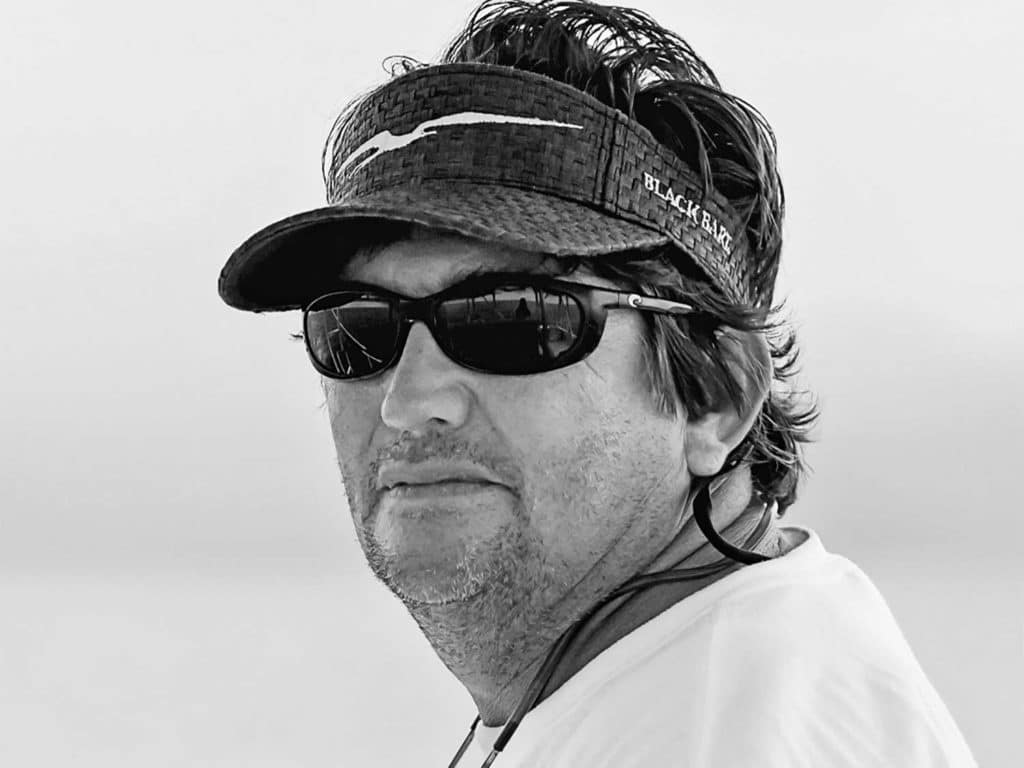
Magdalena Bay and the Travel Evolution
After making the Seattle-to-Alaska run once more for some extended sightseeing, these days the boat is happily based in a far more suitable location: Cabo San Lucas. “Right now, I’m in love with the striped marlin fishing in Mag Bay,” Ruwitch says. “It’s some of the most incredible fishing on the planet, and I’m happy to run the boat now as much as I am to fish, which is what I’ve done most of my career. It’s fun watching other people get as much enjoyment out of it as I do.”
So far, Sharky’s Revenge has made the Mag Bay trip from Cabo at least 10 times; at 46 feet, it’s nearly always the smallest traveling vessel in the fleet, not to mention one of the few to get there entirely on its own bottom. The original 10-cylinder mechanical MAN engines have been rebuilt numerous times, and Ruwitch will admit that sometimes there is just baling wire and bubblegum holding things together, but it’s held up remarkably well over the years. “The miles have never really bothered me,” he says. “I remember back in the day, when everyone was running to Bimini from South Florida, you wanted to go over in a big flotilla of eight or 10 boats, and you always checked the weather really carefully. Hell, I’d run over in my 25-foot Contender, have a rum drink, and then run home.”
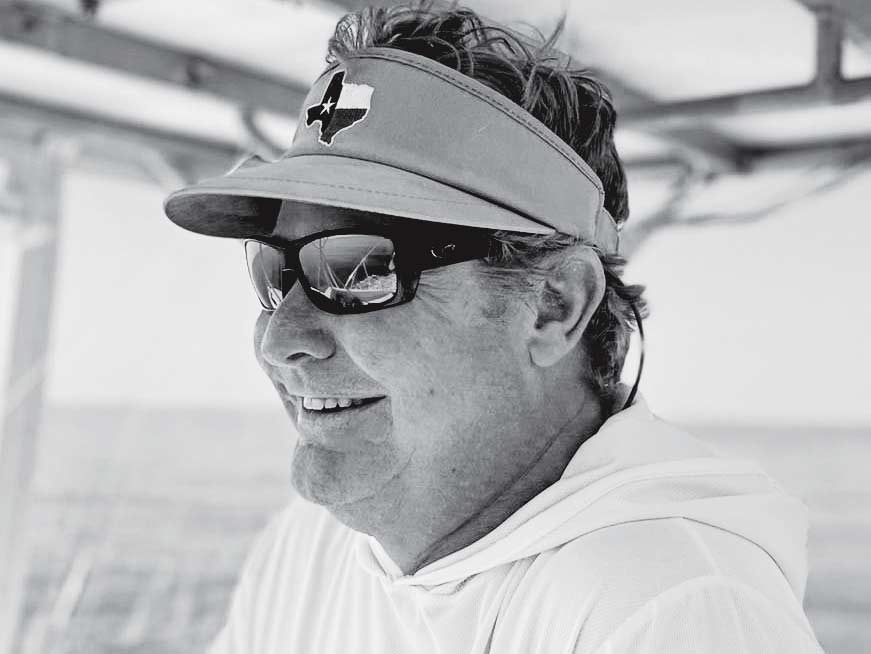
There has been a tremendous evolution in travel as well. “I certainly don’t begrudge anyone shipping their boats around the world,” he says. “It just wasn’t a viable option when we started traveling 25 years ago. Fuel was our big limiting factor, and to an extent, it still is. The boat holds 600 gallons, with 550 of that being usable. Back then, we started off with plastic drums and a hand pump, then we had a 250-gallon aluminum tank with a custom cradle that would sit on the cockpit deck. Now we have a couple of collapsible bladders that we can roll up and stow under the bridge seats once they’re empty. Things have gotten so much easier.
“For me, the best part of the whole travel experience has always been getting there, and seeing everything along the way,” he continues. “We’ve always done this for the adventure, and I hope we can keep doing it for a while longer.”
Sharky’s Revenge is ready when you are.
This article originally appeared in the April/May issue of Marlin.




